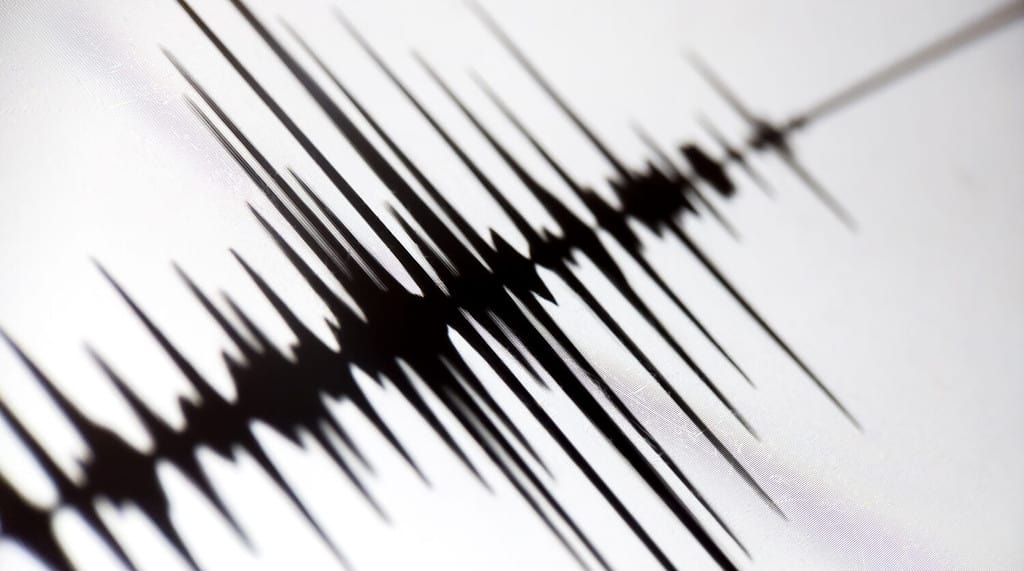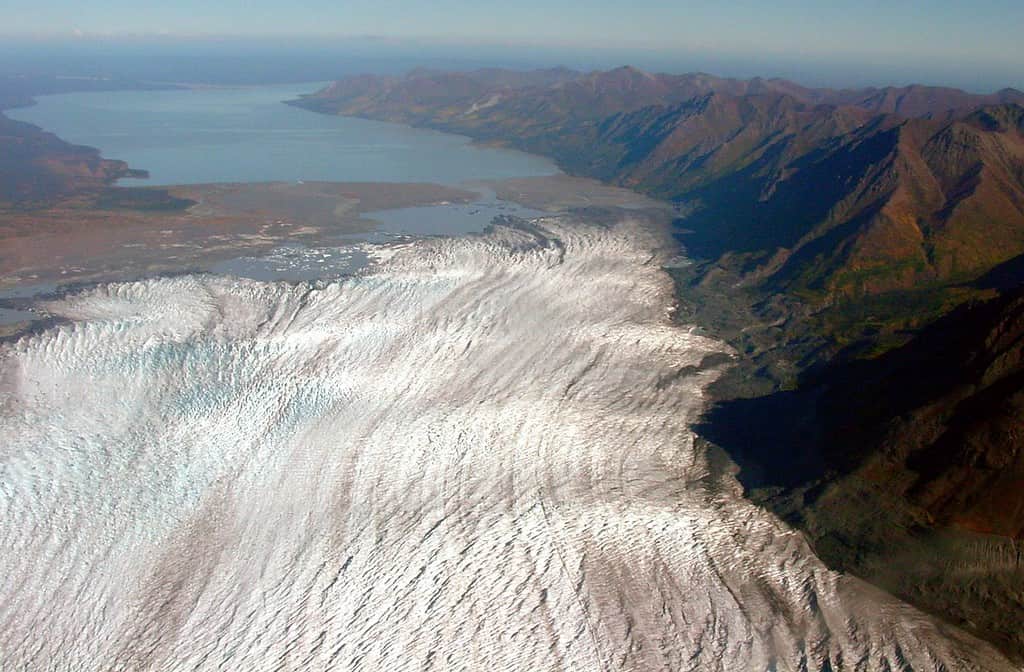Earth is a dynamic place with a surface that sometimes shifts dramatically enough to cause shaking. This shaking occurs in many locations, including around glaciers and ice sheets. Are ice quakes the same as earthquakes? We’ll take a look now.
Are Ice Quakes the Same as Earthquakes?

While ice quakes and earthquakes create seismic waves, they are different.
©MuhsinRina/Shutterstock.com
No, ice quakes are not the same as earthquakes. While both events create a disturbance that registers on the Moment Magnitude Scale, the reasons behind their occurrences are different.
The shaking caused by an ice quake is much more intense at its epicenter than an earthquake. Earthquakes also radiate farther from their epicenter and are felt for greater distances. Ice quakes can last up to a minute, while most earthquakes are over in seconds unless catastrophic.
What Causes an Ice Quake?
Ice quakes, also called cryoseisms or frost quakes, occur when stress caused by ice melting and freezing suddenly releases into the environment. These events are strong enough to have a seismic reading. The source of ice quakes can be rock or soil full of ice, glacial movement, or shifts in frozen lakes.
Conditions that lead to a non-glacial ice quake are specific. Water must have permeated and saturated the soil before an Arctic or polar air mass moves into the region. This saturation can occur because of precipitation, flooding, or melted ice.
Ice quakes are more likely to occur when temperatures quickly plummet from above-freezing into subzero conditions. They are also more likely to happen when it’s coldest, in the middle of the night, or before the sun rises.
Glacial Earthquakes

A glacial earthquake occurs when a glacier or a piece of a glacier moves.
©U.S. Geological Survey, Public domain, via Wikimedia Commons – Original / License
A glacial earthquake is a special kind of ice quake. They happen when a big piece of ice falls off a moving glacier. They also occur when a glacier suddenly moves.
As ice falls off a glacier, it momentarily pushes against the glacier from which it came. When this happens, the massive mother glacier goes back along its trajectory.
Once the piece breaks off, the glacier returns to its original position. This backward and forward movement causes a glacial earthquake via friction between the ice and the ground.
These events can be relatively large and register over a magnitude of 5 on the Moment Magnitude Scale. These seismic events are usually caused by more than 100 billion tons of ice in motion.
What Causes an Earthquake?

When faultlines move on the Earth’s surface, earthquakes occur.
©iStock.com/pandapix
Earthquakes are caused by motion in faultlines on the surface of the planet. This sudden motion is caused by releasing energy that forms due to straining. This straining is caused by rocks moving against each other in a way that causes distortion.
When faultlines move, they send energy in the form of seismic waves through the ground. These seismic waves cause shaking that can be mild to violent depending on what kind of movement is taking place.
Earthquakes can trigger ice quakes. For example, a massive earthquake with a magnitude of 8.8 near Chile on February 27, 2010, sent seismic waves to Antarctica that triggered more minor earthquakes and ice quakes. The shaking caused the ice to shift, resulting in shaking from ice displacement.
Where do Ice Quakes Occur?
Ice quakes can happen anywhere, especially during an unprecedented thaw. Recorded ice quakes have occurred in North America. The regions affected are the Great Lakes region in the United States and Canada, New England, Alberta, Ontario, and Quebec.
Glacial earthquakes are observed in Antarctica, Finland, Alaska, Greenland, and Iceland. The most extensive occurrences happen in Antarctica and Greenland because they’re covered in a massive ice sheet. As this ice sheet moves and cracks, it causes seismic activity.
Why Do People See Flashing Lights Before an Earthquake or Ice Quake?
The appearance of lights during a shakedown of the Earth’s surface has been noted since ancient history. However, nobody is quite sure why it happens.
One theory is that certain rocks experiencing stress during the event cause the lights, though this remains unsubstantiated. It may be that impure crystals fracture as the stress leading to the quake reaches its peak, creating electricity.
Sometimes, these lights flash in different colors, while other times, they look almost like an aurora. They’ve been observed as orbs floating in the air or flame-like apparitions moving along the ground.
These lights interest scientists because they might be usable as an early detection system for impending earthquakes. Most of the captured images of these lights occurred right before or during more significant earthquakes of magnitude five or above. They’re also sometimes visible over 350 miles from the quake’s epicenter.
These lights also appear before some ice quakes. The exact mechanisms causing them in earthquakes are probably to blame.
The photo featured at the top of this post is © National Park Service, Alaska Region, Public domain, via Wikimedia Commons – License / Original
Thank you for reading! Have some feedback for us? Contact the AZ Animals editorial team.







